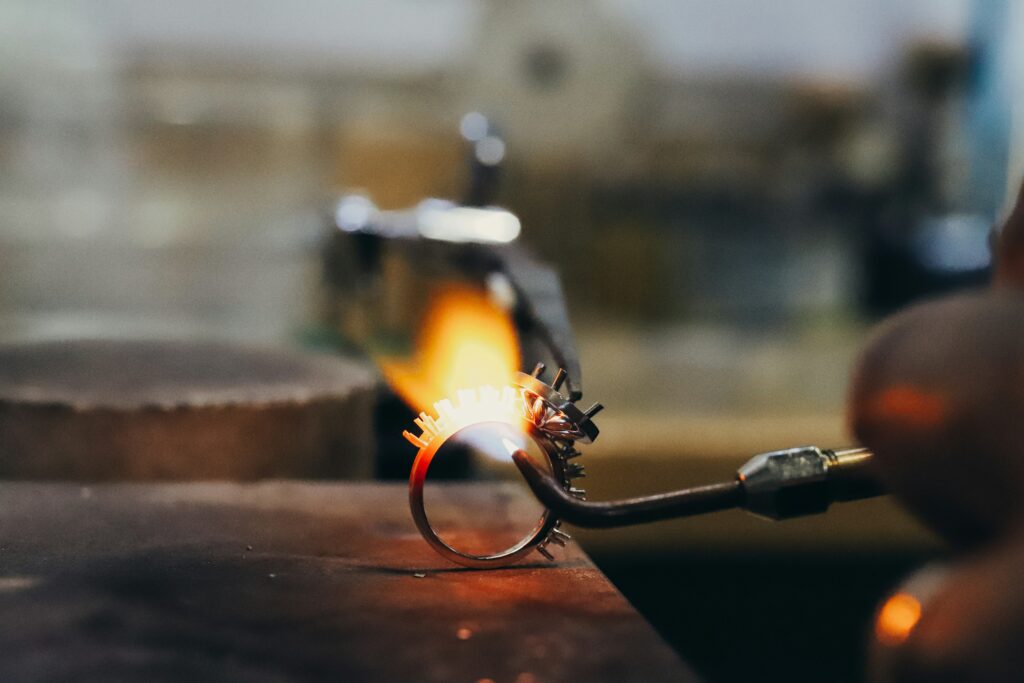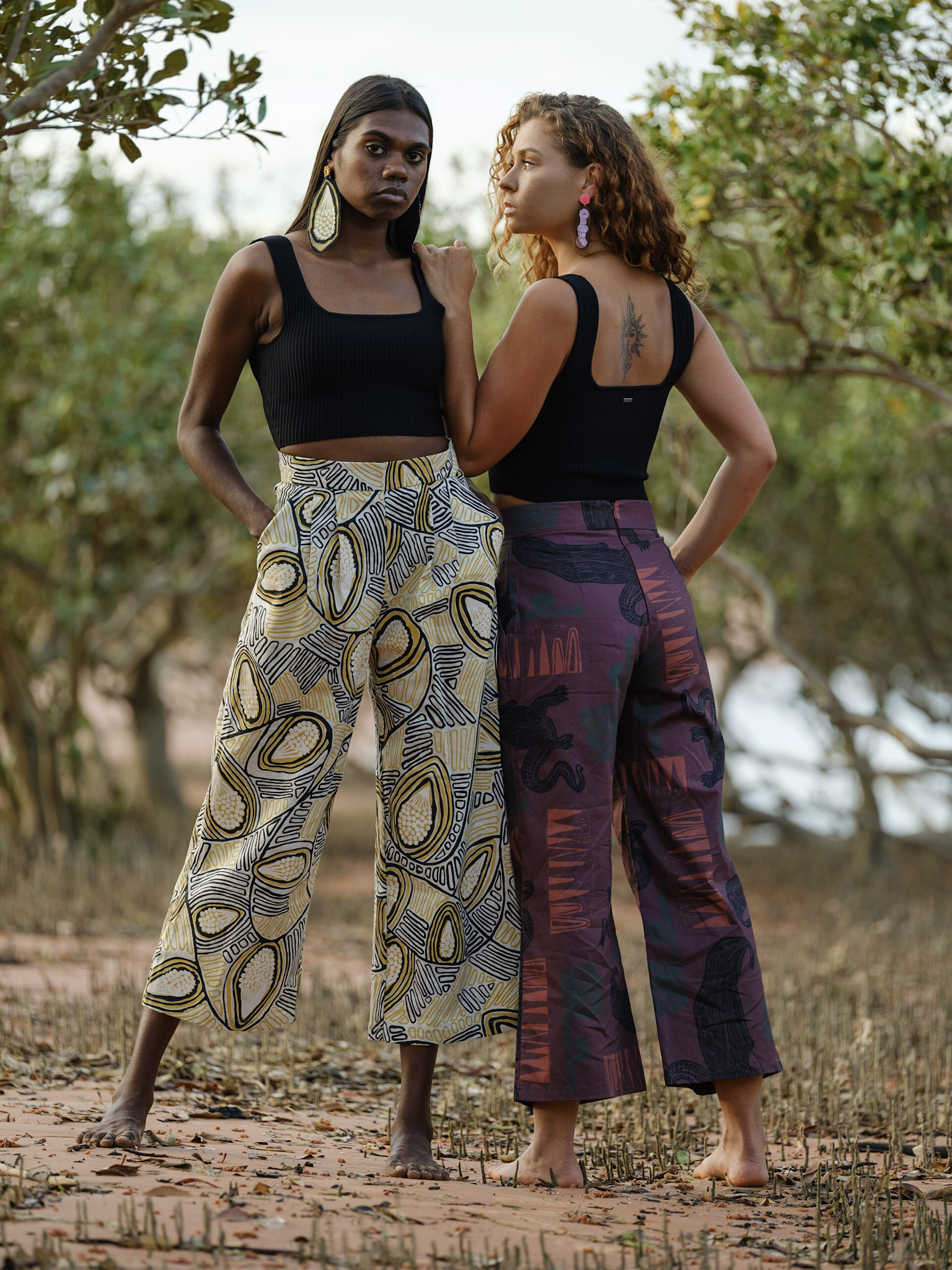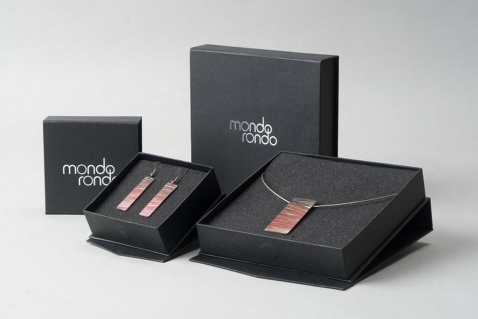PRIZE REVIEW: National Contemporary Jewellery Award 2024

This month, Arts Law has reviewed the terms and conditions of the National Contemporary Jewellery Award 2024 organised by the Griffith Regional Art Gallery. Read the terms and conditions of this competition here.
The closing date for this competition is 5pm, 20 September 2024.
What is the rating?

Arts Law has awarded the competition 3 stars out of 5. Read on to find out more detail.
How did Arts Law help?
Arts Law reached out to the Organiser to make the competition’s conditions of entry more friendly to the artists who are entering. We are pleased that the Organiser was receptive to our suggestions. Although the 2024 Prize terms remain unchanged, we look forward to seeing our recommended improvements incorporated into future competition terms.
What is the National Contemporary Jewellery Award about?
The Award celebrates contemporary jewellery practice and supports the development of the National Contemporary Jewellery Collection. The Collection is the only one of its kind in regional NSW. Artists who have been an Australian resident for the 12 months immediately preceding the Award are encouraged to enter.
How do the copyright terms stack up?
| What is copyright? | Copyright is a bundle of rights that protect literary, artistic, musical and dramatic works (as well as films and sound recordings). These rights allow the owner of copyright to control the ways that a work is used. If you want to learn more, you can read Arts Law’s Information Sheet on Copyright here. |
The terms state that: ‘Griffith Regional Art Gallery will recognise the authorship of works used in any publicity or promotion.’
While it is good to see that the Organiser intends to acknowledge artists’ authorship rights, we suggest that intellectual property rights could be better protected through more clear language. For example, including a clause that specifically states that Entrants retain copyright ownership of any submitted work. It would also be good to see a definition of what would be considered an ‘original work’ for the purpose of the competition, such as whether the works must be bespoke jewellery.
The ‘Publicity and Promotion’ section of the terms covers licensing. It requires finalists to grant a licence to the Organiser for publicity and promotion purposes and states that they will be credited appropriately. Entrants who are not selected as finalists are not required to give these permissions. This is a positive starting point. To further improve the licence term, we recommend that the Organiser specify that they are in fact seeking a licence from finalists, and that it is a non-commercial and non-exclusive licence. Since the Organiser will not pay licensing fees to the finalists, it would be best to limit this licence to a set time period (for example, 1 or 2 years).
Does the competition respect moral rights?
| What are moral rights? | Creators have moral rights when their work is used (i) to attribution, (ii) against false attribution, and (iii) to integrity, which means not having their work treated in a derogatory way. For more information, you can read Arts Law’s Information Sheet on Moral Rights here. |
The terms do not explicitly protect moral rights, however, the guarantee that finalists will be credited appropriately if their work is reproduced for publicity and promotion appears to acknowledge the right of attribution. The terms do refer to recognition of “authorship” rights generally which could be interpreted as reflecting attribution rights.
We recommend including a specific clause stating that the gallery acknowledges the moral rights of creators and briefly setting out that the Organiser will:
- Credit the artist when their work is used (the right of attribution).
- Refrain from treating the work in a way that hurts the artist’s reputation (the right of integrity).
Entrants can read Arts Law’s Information Sheet on Moral Rights for more information.
What about Indigenous Cultural and Intellectual Property?
| What is ICIP? | ICIP is a broad term that covers all of the rights that Indigenous people have, and want to have, to protect their traditional arts and culture (including writing, music, performances, paintings, languages, sacred sites, stories passed down orally, and other records of heritage). If you want to learn more, you can read Arts Law’s Information Sheet on ICIP here. |
The terms do not contain a reference to ICIP. We encourage the Organiser to consider including a term in future Awards stating that the Organiser recognises ICIP. These are the rights that Indigenous people have, and want to have, to protect their traditional arts and culture.
Ideally, this term would require Entrants to inform the Organiser if there is any ICIP in the artwork. If so, any display of the artwork or of an image of the artwork would be accompanied by an ICIP notice. An ICIP notice would acknowledge the inclusion of ICIP, acknowledge the traditional custodians, and state that dealing with any part of the work for any purpose that has not been authorised by the traditional custodians may be a serious breach of the customary laws of that community. Contact details for enquiries regarding permitted uses of the work can also be included in the notice.
Entrants can read Arts Law’s Information Sheet on Indigenous Cultural and Intellectual Property for further details.
What about costs and prizes?
Entrants must pay the following costs:
- A non-refundable entry fee of $50 for each submitted entry
- All delivery and return costs for express postage (or the cost of transporting works via courier or by hand).
- Insurance of works while in transit.
The combination of these costs may be prohibitive to some artists’ entry in the competition. We encourage the Organiser to improve equitable access for artists by paying for or sharing in some of these costs in line with the National Association for the Visual Arts’ (NAVA’s) Code of Conduct.
We are pleased to see that:
- Finalists will be given adequate notice of one month to organise delivery of their work to the Organiser for exhibition.
- The Organiser will repackage the works to facilitate their return at the end of the exhibition (however, finalists must pre-pay the return cost and provide reusable packaging).
- The Organiser will insure the works while in their possession and/or in their premises.
Entrants should note that there is over 2 months between the close of the exhibition and the last date by which exhibited works will be returned to finalists. When we asked the Organiser about the reason for this delay, they explained that this was due to staffing constraints over the new year holiday period.
Prizes
There are 2 prizes available:
- National Contemporary Jewellery Award: a $5,000 acquisitive award, where the work will automatically be acquired by the Organiser and included into the Collection, regardless of the indicated sale price; and
- Design Excellence Award: a $1,000 non-acquisitive award.
Other issues
Eligibility
The Award is open to artists who have been a resident of Australia for the 12 months immediately preceding the Award.
Entry
Entrants may submit up to 2 works or series of pieces that work as a whole. Entrants must also submit:
- A completed entry form with sale price (inclusive of GST and the Organiser’s 30% commission).
- A 1-page CV and an artist statement of up to 200 words, saved as a single .doc or .pdf file.
- 2 high quality, press ready digital photographs of each work (showing detail areas on a white background). There are specific titling requirements for these photos.
Entrants must affirm that they are the original creators of their submission and that their work does not constitute an infringement of copyright.
Selection Process
There will be 2 rounds of judging.
First, judges will assess the photographic submissions to select finalists. Entrants will be informed about the outcome of this first round on 27 September 2024. Finalists will be invited to send their works to the Organiser before 25 October 2024.
Second, judges will select the 2 winning entries by viewing the original artworks of the finalists. The winners will be announced at the opening of the Award exhibition on 8 November 2024. Finalists are encouraged, but not required, to attend. The exhibition will close on 22 December 2024.
In both rounds, works will be assessed based on 3 criteria: concept, craftmanship and originality. It would be helpful for Entrants if the Organiser provided additional details about these criteria and who will form the judging panel.
Sale of Artworks
Entrants should be aware that all of the works entered into the Award must be for sale, and that the Organiser’s commission value is 30%.
What could they have done better?
In summary, the Organiser could make the terms of the National Contemporary Jewellery Award fairer to Entrants by:
- providing more clear and specific terms about the intellectual property rights protections;
- reducing or sharing in the costs borne by Entrants; and
- providing additional detail about the judging panel and criteria.
Improvements of the intellectual property right protections alone would raise the overall rating to 4 out of 5 stars.
About Arts Law’s Prize Reviews
Arts Law regularly reviews the terms and conditions of competitions and rates them out of five stars. Our review looks broadly at the terms and conditions of a competition. In particular we look closely at how a competition deals with an entrant’s copyright and moral rights, and consider this in light of the prize. Entrants should always consider the possible profile-raising which may result from being a finalist or winner.
By accepting the terms and conditions of a competition, entrants should be aware that they may be entering a legally binding contract.
For more information, see our free information sheet on competition conditions. Artists are welcome to contact Arts Law for legal advice on the terms of a competition. We also invite competition organisers to contact Arts Law for best practice assistance to make their terms and conditions fairer for artists.
Further Information
Please email us at [email protected] to tell us about any competitions or prizes you think we should check.
See more about Arts Law’s campaign to improve competition terms and conditions in the Prizes and Competitions section.




